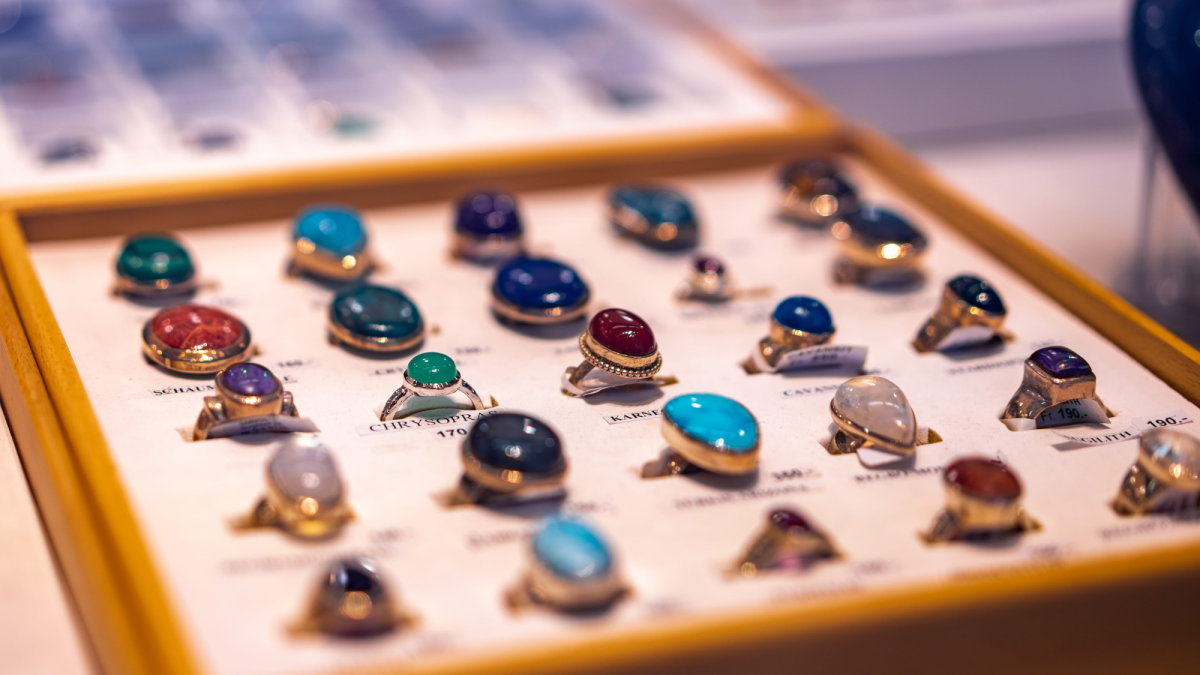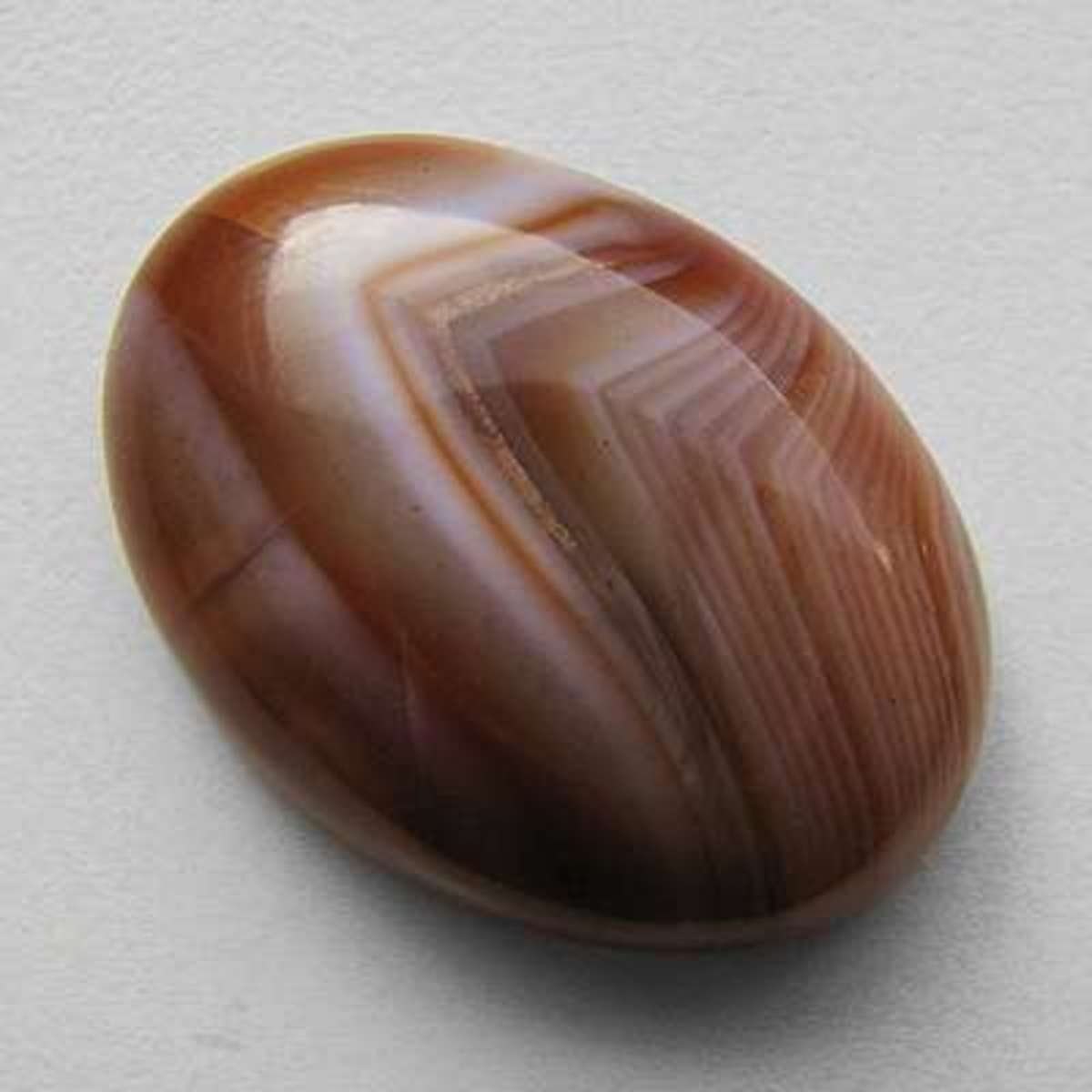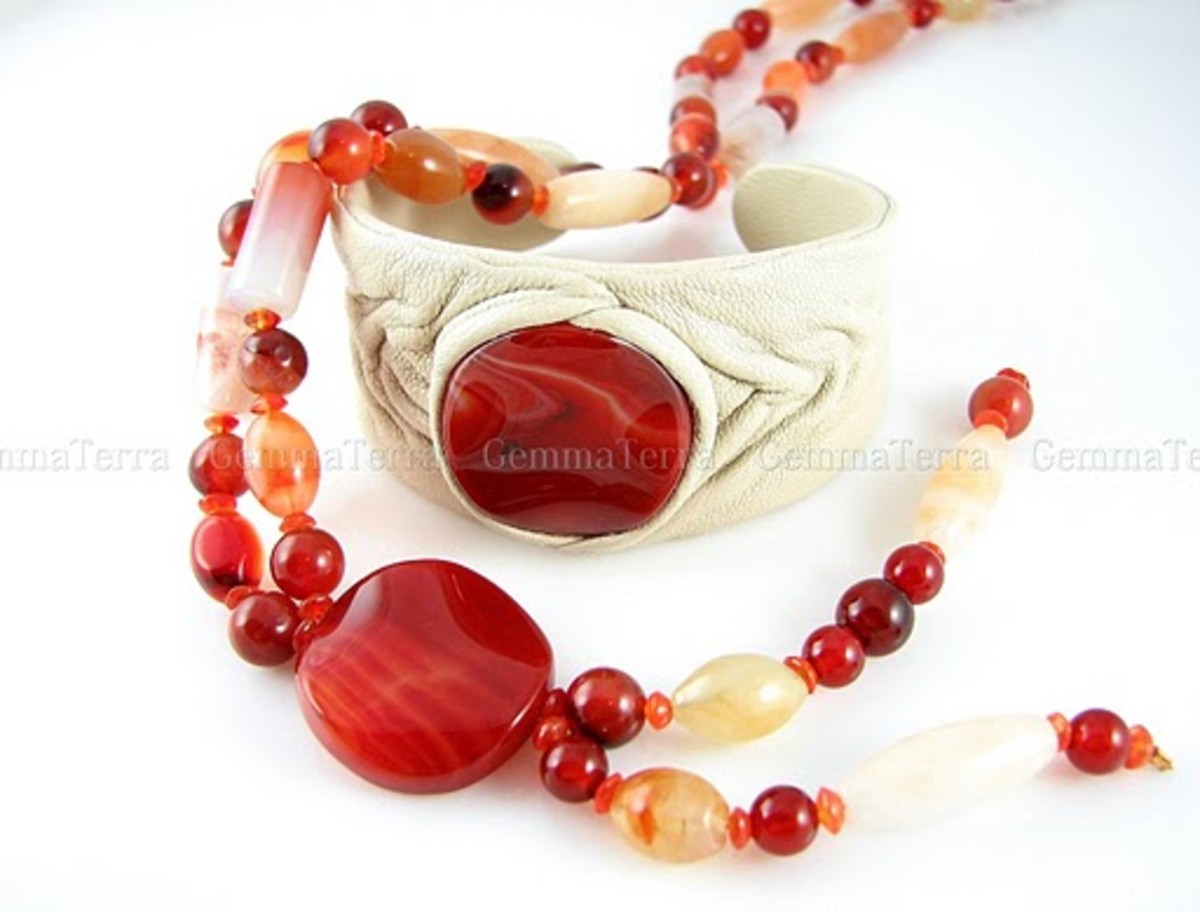Gemstones & Gemstone Lore
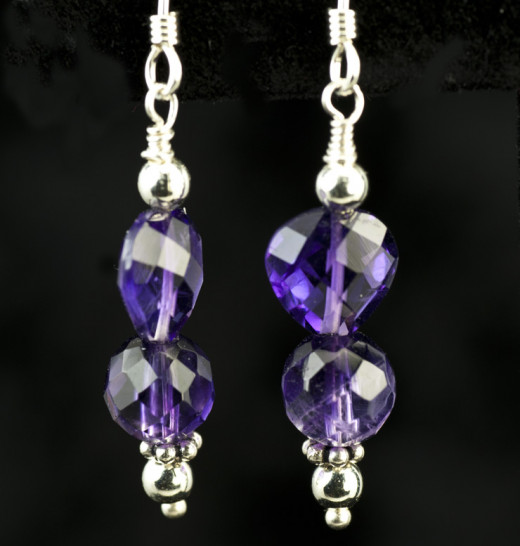
Gemstone Descriptions - Some of my Favorites
These are some of my all time favorite gems. As I find other stones I can't live without, I'll add them to this list.
A gemstone can be a mineral, a rock, or any petrified material that's suitable for use in jewelry. Diamonds, rubies, emeralds, sapphires, and amethysts are generally the most valuable.
- Agate is a form of chalcedony. Agate can occur in many colors with a variety of inclusions. Many agates have enchanced color.
Agates are easily cared for - they won't scratch readily and can be cleaned in an ultrasonic, but you can also clean them with a damp soft cloth.
Some people believe that wearing agate increases perceptiveness and also brings good luck, inspiration and strength to the wearer.
- Alexandrite is a form of chrysoberyl which exhibits a dramatic color change (red to green) depending on the lighting.
- Amber is one of my particular favorites. Amber is a fossilized resin and can occur in a range of colors. Amber is soft and porous and can be easily scratched or damaged by chemicals. Clean a silver or gold setting with a polishing cloth - nothing abrasive and no chemical cleaners.
Amber is thought to dispel negative energies and to encourage a positive attitude. It was used for medicinal purposes at one time.
- Amethyst is a form of quartz that ranges in color from light to deep purple. The color is due to the presence of iron and aluminum impurities. Some of the deepest darkest purple amethyst comes from Brazil. Amethyst is the birthstone for February. Amethyst is a hard stone so it won't scratch readily and isn't damaged is a piece of amethyst jewelry is cleaned in an ultrasonic cleaner. The stone can be scratched by something that harder than it is, so removed your amethyst jewelry before doing heavy physical work.
According to gemstone lore, some people believe that amethyst provides protection to the wearer and amulets of amethyst were worn into battle in Medieval times. Amethyst is also thought to bring calmness, and might even ward off drunkenness.
- Aquamarine is generally a delicate light blue color, but it can occur in more intense shades. Chemically, aquamarine is a beryl. The blue color of aquamarine is due to traces of iron. At one time it was worn an amulet thought to promote safety when traveling over water
- Aventurine is a member of the quartz family that has inclusions that affect the color (chromium produces green to blue colors while iron produces orange to brown shades. It's a hard stone and is easily maintained.
Aventurine is considered to encourage motivation, creativity, healing, hope, and to bring abundance.
- Azurite - an intensely blue gemstone that frequently occurs with malachite. The blue color is due to the presence of copper in the stone's chemistry. Azurite has been used as a blue pigment since ancient times. The ancient Egyptians used it as an eye makeup.
Azurite is moderately soft and porous. Azurite can be easily scratched and it's better set in pendants and earrings than in bracelets and rings.
Azurite has long been used as a healing stone and it is reputed to clear the mind and to enhance receptivity.
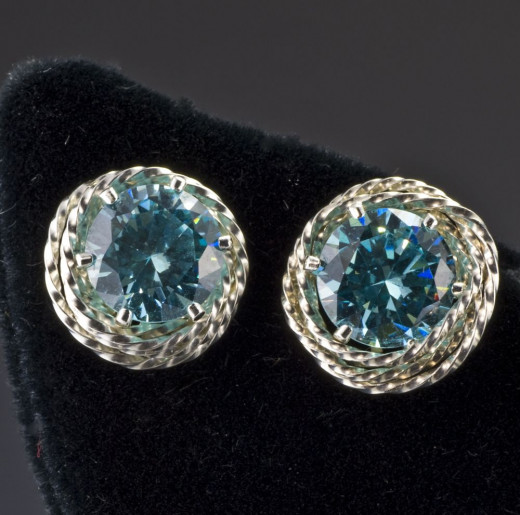
Topaz
A Hot Stone for Fall and Winter
I love Topaz. Topaz is a fairly hard stone, but it can be cracked or chipped easily due to its internal structure. Chemically, it's an aluminum silicate with chromium. Topaz has wonderful gem qualities. It has a high refractive index and takes a fabulous polish.
Like many stones, topaz changes color when heated: yellow topaz often becomes reddish-pink. The pink color is stable. Although some colors of topaz are due to impurities, many of the most familiar topaz colors are due to irradiation and heat treatment.
I recently encountered "Mystic Topaz" and I wondered exactly what that might be. I've discovered that a recent trend is topaz that displays iridescent colors. Such stones are attractive but the treatment is not permanent. The color effects are the result of nuclear irradiation or diffusion coatings with thin layers of titanium dioxide deposited on the surface of the stone. These coated stones must be handled very gently as any scratch or abrasion can mar the surface layer.
Blue topaz is wildly popular and comes about due to irradiation, which turns the stone blue. The blue color can range from a light color to an almost electric blue. Blue topaz begins as a colorless natural topaz crystals which are irradiated to change the color to blue and heated to stabilize the change.
Bombardment in a nuclear reactor produces the deep London Blue topaz - a slightly greenish or grayish stone, while electron bombardment in a linear accelerator results in the light aqua-like blue known as sky blue. Combinations of both treatments produce the highly saturated Swiss and electric blues.
Topaz of any type makes a good jewelry stone. It is safe to assume that some form of heat and/or irradiation has been used on colored topaz prior to cutting.
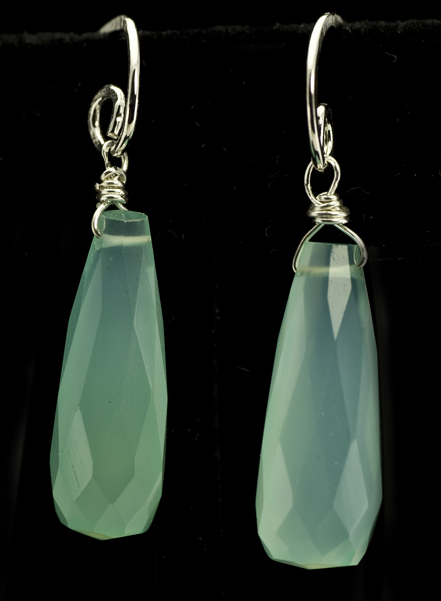
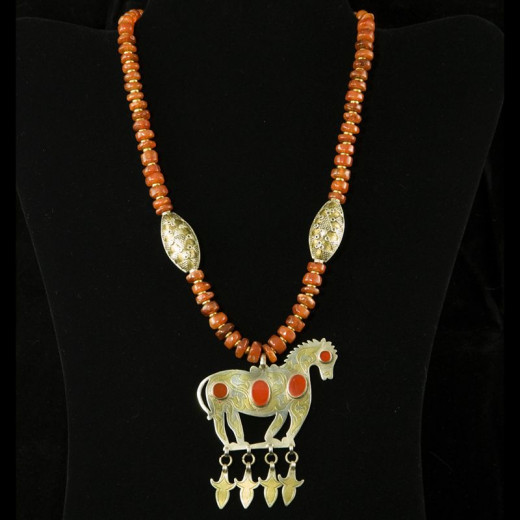
fluorite necklace
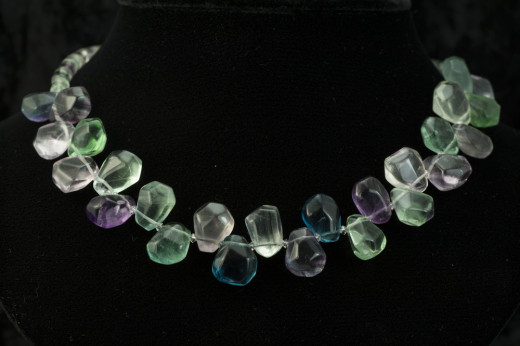
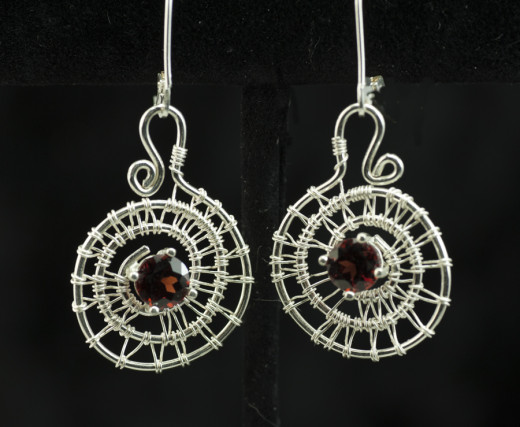
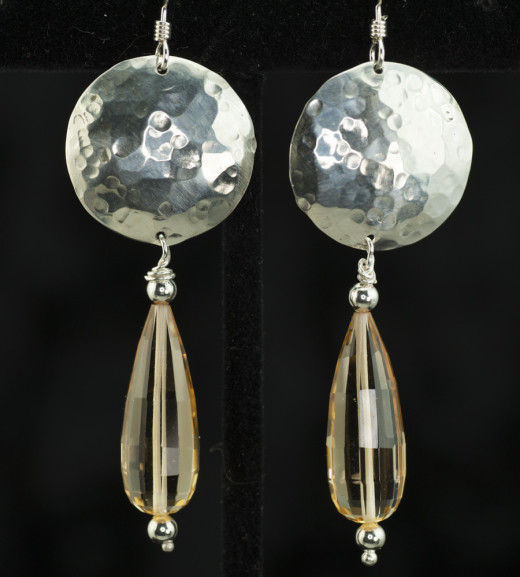
More Gemstones
- Beryl - this gem occurs in many different colors - the intense green form is known as Emerald, while the lighter blue form is Aquamarine.
- Bloodstone - bloodstone is a deep green chalcedony with red spots. It's also called heliotrope. Bloodstone is the traditional birthstone for March and is thought to encourage healing, improve decision making.
- Chalcedony - quartz; chalcedony includes both banded "agates" and onyx depending on the structure.
I have some beautiful faceted aqua chalcedony to use for my new jewelry designs.There's a luminous quality to the aqua chalcedony and everyone seems to love the color. This stone would make terrific bridal jewelry, too - perfect for a winter or a spring wedding!
- Carnelian - I love carnelian. Carnelian is a translucent orange/red to red/brown variety of chalcedony and is fairly hard. The red tints are caused by iron oxide impurities. It's one of my favorites.
Carnelian is recommended to improve mental clarity and may assist people overcoming anger and maintaining self-control. It was highly valued for ornamentation by the ancient Egyptians, Greeks, and Romans It was reputedly used by the Egyptian goddess Isis to protect the dead on their journey through the afterlife. Carnelian was thought to provide increased energy. Ancient Egyptians set carnelian with turquoise and lapis lazuli for enhanced power.
- Chrysoberyl - once widely popular for jewelry, chrysoberyl is now relatively rare. Chrysoberlyl has hard greenish yellow crystals. Alexandrite is one variety that exhibits color change.
- Chryoprase - an apple-green form of chalcedony
- Cinnabar - mercury sulphide ore with distinct red to brick red color.
- Citrine is a member of the quartz family. Most citrine is really heat treated amethyst. Citrine is a fairly hard stone that ranges from light yellow hues to oranges. It's transparent and easily faceted, so it's popular for jewelry.
Many people believe that citrine promotes clear thinking and instills confidence in the wearer.
- Coral is the skeletons of microscopic sea creatures and is composed of calcium compounds. As a result, coral is soft and porous. It's easily scratched and damaged by chemical exposure.
Coral occurs in a variety of colors depending on the specific type of coral and it's frequently dyed. Coral is thought to increase awareness and objectivity. Provides calmness, quiets emotions
- Diamond - made of pure carbon, diamond is the hardest, densest, and rarest gem. Diamond is thought to encourage hope, promote healing, and impart protection.
- Emerald - a beryl stone with traces of chromium and sometimes vanadium providing the intense green coloration. Emeralds are extremely popular for jewelry, but perfect emeralds are hard to find. Most emeralds have intenal flaws
Emeralds have been known since ancient times and were mined as early as 2000 BC. Emerald is a birthstone for the month of May. Many people believe that wearing emeralds attracts money.
- Fluorite - this gem comes in a variety of colors from purple to pink and green and many shades in between. It has a glassy luster and it fluoresces or glows blue under UV light.
Fluorite is thought to increase intuition, to foster harmony and balance in relationships, and may attract abundance and wealth.
- Garnet is a gem that was known to the ancients. There are several different forms of garnet, but they are all chemically related. The most common colors are oranges, reds, and greens.
Almandine and pyrope are the more familiar red garnets. Rhodolite is a raspberry shade, hessonite garnet is orange, and demantoid garnets are green. Garnet is thought to encourage friendship and fellowship
- Hematite is a widespread and relatively hard iron ore. It's steely gray with a metallic luster when polished. Modern hematite for jewelry is often man-made and it's difficult to tell a natural stone from a man-made one. Hematite is thought to focus energy and helps to balance emotions
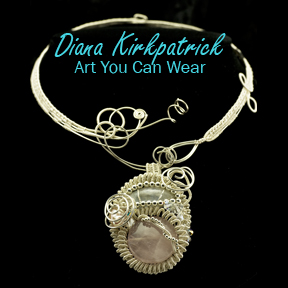
Keep your Silver Jewelry Clean
Works well on woven silver pieces, too
The tarnish that forms on silver pieces is silver sulfide, which is black. A thin coating of silver sulfide on silver will darken the silver surface. Cleaning the silver using most cleaning methods removes the silver sulfide coating, but polishing and most jewelry cleaners also remove some silver during the cleaning process. Here’s an approach to cleaning that does not remove any silver, but converts the tarnish back to silver.
The chemical reaction between the silver sulfide and the aluminum only occurs when the two are in contact while in the baking soda solution, so the silver has to touch the aluminum foil. The silver sulfide is converted back to silver and the sulfur is deposited on the aluminum either as yellow flecks of sulfur or as aluminum sulfide. Warming the water speeds up the reaction and the solution carries the sulfur from the silver to the aluminum. Tarnish will begin to disappear within a few minutes. You may need to repeat the process for badly tarnished pieces, reheating the baking soda and water mixture.
You will need a container lined with aluminum foil. The container should be large enough to totally immerse the silver you want to clean. Heat the water and mix in the baking soda at the rate of a cup of baking soda to a gallon of water (adjust the amount of water to the size of your container and silver piece, then add the correct amount of baking soda for the amount of water used). Place the jewelry directly on top of the aluminum foil and add the water and baking soda solution. Some bubbling may occur during this reaction, so you might want to place your container in a larger pan or somewhere where some overflow won’t matter.
Caution is needed when cleaning jewelry set with stones. Some stones are porous and should not be immersed in water or any cleaner. Examples are opals, turquoise, malachite, lapis, or pearls.
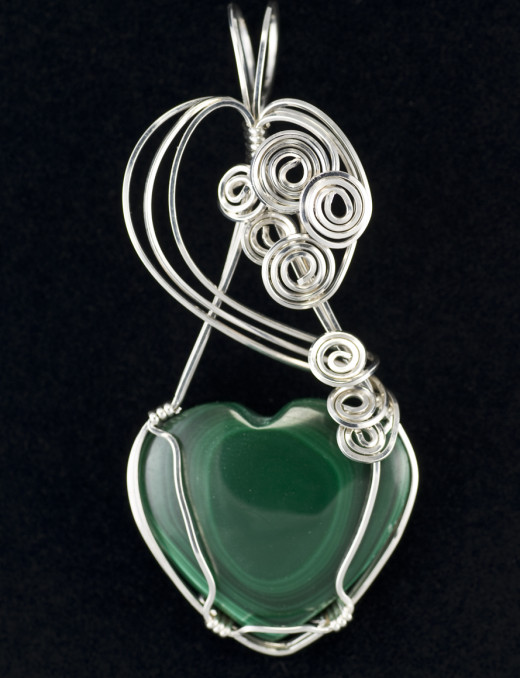
Caring for Gemstones and Gemstone Jewelry
Here are some tips for taking care of your jewelry. These tips apply to all jewelry, not just my handcrafted silver and gold pieces.
Don't exposre your jewelry to perspiration and dirt. You should remove your jewelry before working in the garden or engaging in other physical labor, exercising, swimming, bathing, etc. Avoid exposure to household cleaners and chemicals that can damage your jewelry - remove your jewelry before dealing with chemicals. It seems logical that pearls and other porous stones can be damaged by chemicals, but even karat gold can be discolored by chemical exposure (to chlorine, for example), even from something like a soak in a hot tub.
Apply your cosmetics, make-up, hair spray, and perfume before putting on your jewelry. Remove bracelets and rings before applying hand lotions and creams. Remove earrings when you have your hair done, especially if you are having it colored.
Jade, turquoise, malachite, and lapis are among porous soft stones that should not be cleaned in an ultrasonic cleaner or soaked in jewelry cleaner solutions. Softer, more porous stones such as these require extra careful treatment. Avoid using hot water on these stones.
Remember that pearls are precious gems, too. No ultrasonic or soaking in jewelry cleaners - just wipe off with damp soft cloth. If more cleaning is required try soapy water (Ivory flakes) on a soft cloth and dry thoroughly.
Jewelry often comes in a protective bag or box. Store your jewelry flat in a plastic bag. Store pearls in soft bags away from other jewelry which might scratch the pearl's surface. Never put your jewelry away wet - wipe it off with a damp cloth and air dry.
Store your jewelry in a clean dark dry place. Don't just toss your jewelry loose into a jewelry box or drawer. Your pieces will scratch each other. A fabric lined jewelry box is ideal and individual bags and jewelry boxes are excellent, too. Store your silver jewelry in a tarnish resistant bag.
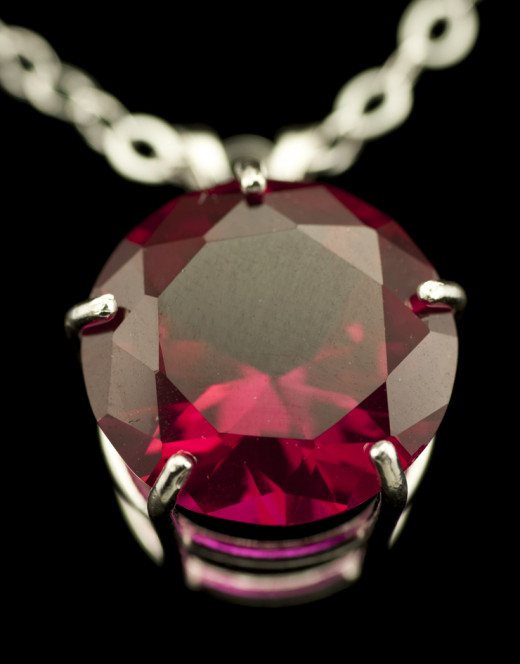
Traditional & Modern Birthstones
There are lots of choices!
When it comes to birthstones, there are a lot of choices. Some birthstones are traditional favorites while others have come along from mystical or other influences. There are a number of versions of each list, too.
Here's one version of the traditional list - January/garnet, February/amethyst, March/bloodstone, April/diamond, May/emerald, June/alexandrite, July/ruby, August/carnelian, September/peridot, October/tourmaline, November/topaz, and December/ruby. There are multiple alternative stones for some months: jasper for March, sapphire for April, emerald for June, onyx for July, or aquamarine for October.
Modern birthstones have similar lists - January/garnet, February/amethyst, March/aquamarine, April/diamond, May/emeral, June/pearl, July/ruby, August/peridot, September/sapphire, October/opal, November/citrine, December/blue topaz. Once again, there are multiple alternatives: moonstone for July, tourmaline for October, or topaz for November. According to some sources, this list is the currently preferred US birthstone list.
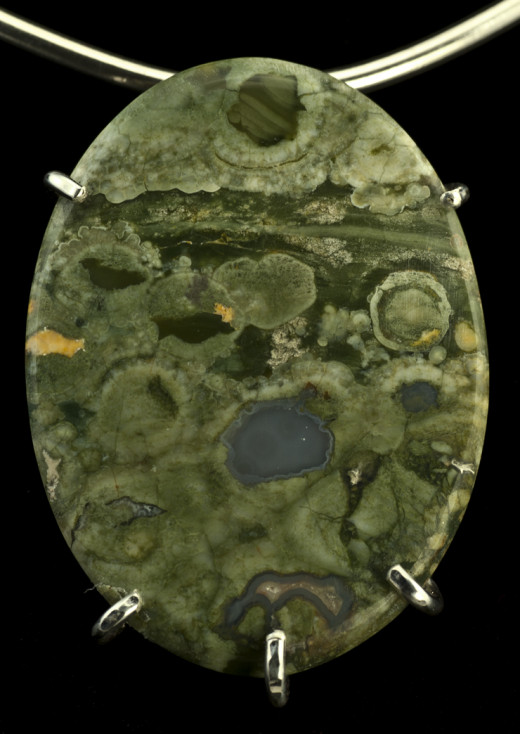
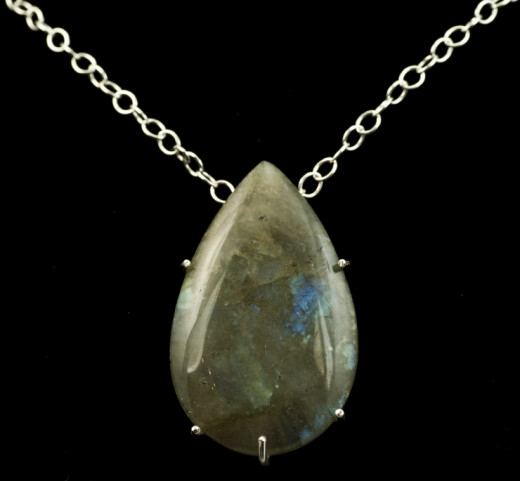
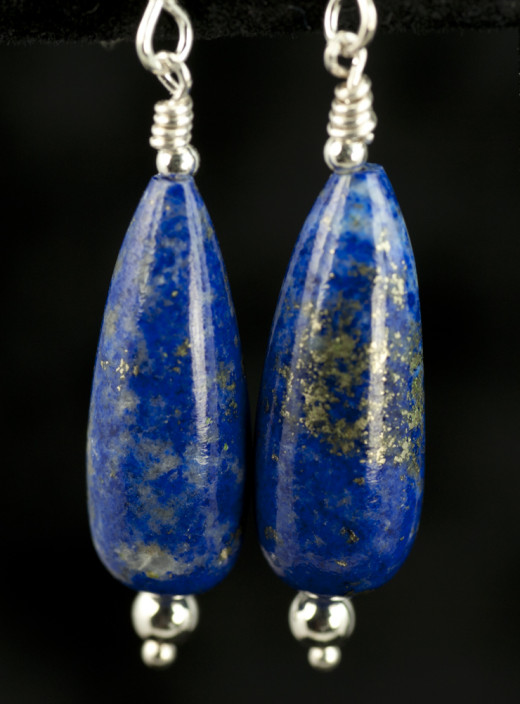
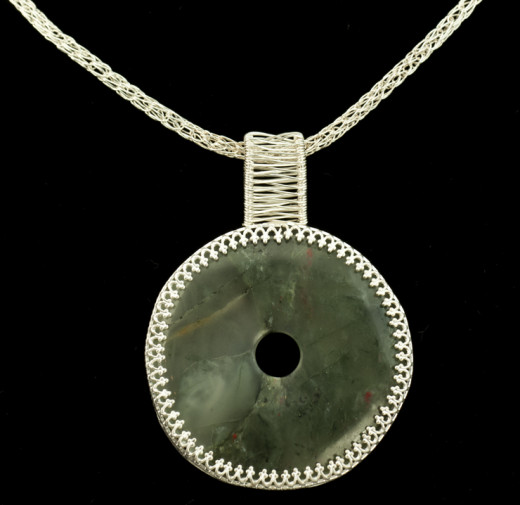
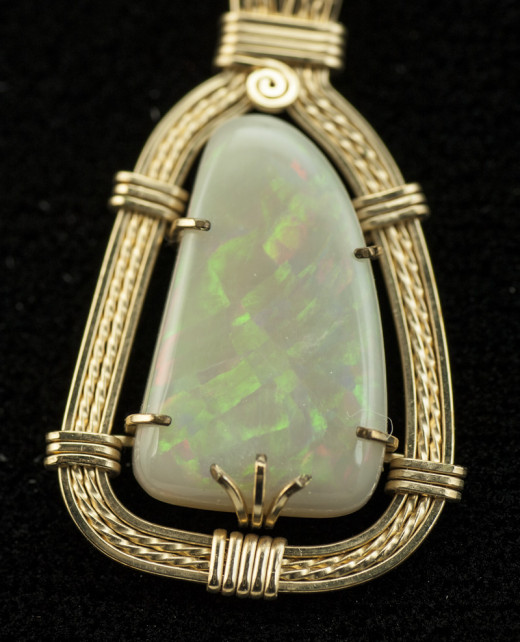
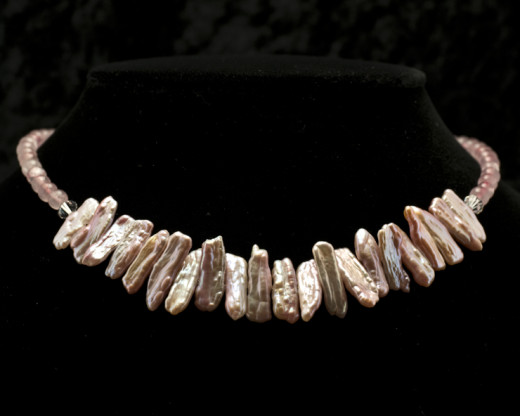
And More Gemstones
-Iollite, also known as water sapphire, is a deep purple-blue stone which is transparent. It appears blue when viewed from one direction and may appear almost colorless when viewed from another angle (a property known as pleochroism).
- Jade - long considered a "sacred" stone, jade symbolizes calmness, wisdom, and serenity. There are two recognized "forms" of jade - nephrite (creamy white to green and almost black) and jadeite. The most common colors are green or white (jadeite), but jade can occur in many colors. The various colors are the result of impurities. Jade is often seen in beautiful carvings, beads, and cabochons. This stone is thought to have influence on longevity.
- Jasper - an opaque form of chalcedony, jasper occurs in many shades of brown from cream and beige to chocolate browns and deep grays. Jasper is thought to foster awareness and balances emotional, physical, and spiritual energy
- Labradorite is one of my all time favorite gems! It's a silky appearing iridescent dark grey green stone with flashes of blue, green and occasionally red. This gem was discovered in Labrador - therefore, the name.
Labradorite can appear as colorless or even red, but the dark green-grey color is typically seen in jewelry. Labradorite is thought to symbolize the "third eye".
- Lapis Lazuli is a rich deep blue gemstone, known to the ancients. It often contains flecks of gold colored inclusions (pyrite). It's long been used to create beads and carvings. Lapis is relatively soft and porous and lapis jewelry should not be cleaned in an ultrasonic or with chemical cleaners.
Long thought to increase awareness and objectivity, lapis has been considered to have healing and curative properties. In ancient times, lapis found use as a pigment, a cosmetic, and in medicines.
- Malachite is a copper ore and is frequently associated with azurite. Malachite is characterized by patterns of bands of several shades of green. It's an opaque stone that is frequently used for carvings, beads, and cabochons. Malachite is soft and porous. Many think that malachite may enhance insight, clarify emotions. Some think it also attracts money.
- Moss "Agate" - a transparent to translucent chalcedony with green, brown, or black moss-like inclusions.
- Moonstone- The color of moonstone varies from almost clear to white to yellowish translucent. Moonstone is generally cut as cabochons. This gem can be found in Myanmar, US, Brazil, India, Madagascar, and Sri Lanka. Moonstone has been used in jewelry for centuries, and was known and used in ancient times . The Romans admired moonstone, which they thought came from solidified rays of the moon. Both Romans and Greeks associated Moonstone with their lunar deities.
Moonstone became popular during the Art Nouveau period when French goldsmith René Lalique and many others created jewelry designs using this stone.
Moonstone is feldspar with a pearly and opalescent luster. Moonstone is composed of two feldspar species, orthoclase and albite. The two species are intermingled. As the newly formed mineral cools, the intergrowth of orthoclase and albite separates into stacked, alternating layers. When light falls between these thin, flat layers, it scatters in many directions producing the phenomenon called adularescence.
The most sought-after moonstones (nearly transparent and with a decided blue sheen) usually come from Sri Lanka. The earliest commercial mines were located in the Adula mountain range in Switzerland… whence came the name for its characteristic sheen, adularescence. The most common moonstone is of the mineral adularia. The plagioclase feldspar oligoclase also produces moonstone specimens. Deposits of moonstone occur in Australia, the Austrian Alps, Mexico, Madagascar, Burma, Norway, Poland, India, Sri Lanka, and the United States.
- Obsidian - deep black volcanic glass
- Snowflake Obsidian - white "snowflake" markings distinguish this obsidian form.
- Onyx - a form of chalcedony. Thought to foster fidelity and resourcefulness, aid in realizing potential, and to promote decision making
- Opal - occurring in a variety of colors, opal often has a gelatinous clarity with flashes of color due to water trapped within the crystalline structure of the stone. Ancient Roman thought opals were symbols of hope and purity.
- Pearls - there are many varieties of pearls named according to their environment or style. Freshwater pearls occur in freshwater mussels; other pearls are found in saltwater mussels. Pearls are natural organic substances and can be found in a wide variety of shapes. Although you see a lot of round pearls, perfectly round pearls are actually quite rare.
Quartz - can be opaque or transparent and is the most common mineral. Many common gemstones are quartz with various impurities and inclusion providing the distinguishing characteristics of the particular gem.
- Rainbow Moonstone - Rainbow Moonstone is technically a white labradorite. Although although rainbow moonstone and moonstone are in the same family, the two stones are geologically different. The rainbow moonstone is whiter than true moonstone and has the internal reflectance of labradorite. It was discovered in the 1960s and has become very popular.
This stone is thought to help in balancing the psychic centers and grounding negative energies. It helps you to accept the ups and downs of life and is specifically helpful at opening you to your spiritual gifts. All the various Moonstones are connected to water and to the lunar cycles. Rainbow Moonstone is thought to bring calmness coupled with awareness. It can also alleviate many degenerative conditions with respect to the hair, skin, eyes and fleshy organs of the body. It has been said to provide remedial action for disorders such as swelling, insect bites, bee stings, and anaphylactic shock.
Moonstone is connected strongly with the moon and intuition and empathy. The most powerful effect of moonstone is that it is calming to ones emotions. Rainbow Moonstone is wonderful at balancing yin and yang energies. It is especially good at helping males get in touch with their feminine sides.
- Rhodochrosite - a fairly soft stone ranging in color from pink through reds to browns and black. Rhodochrosite fosters renewal and expansion of consciousness
- Rhodonite - pink to grayish with a glassy luster. This stone is thought to promote peace, attention to detail
- Rose Quartz - rose red to pink; may bring love and happiness to the wearer, fosters emotional healing. This is one of my all time favorites. I love the softness and delicacy of the look it creates in a piece.
- Ruby - a corundum stone almost as hard as a diamond, rubies are extremely popular
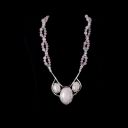
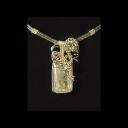
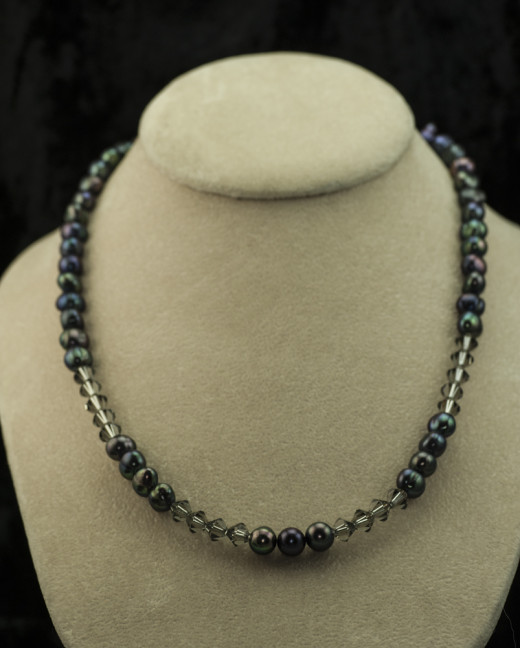
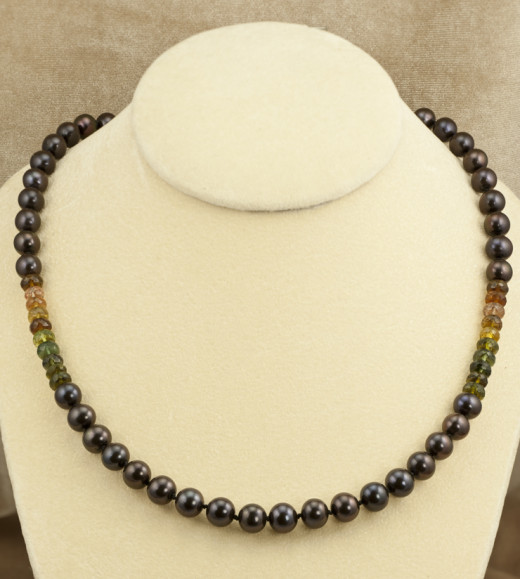
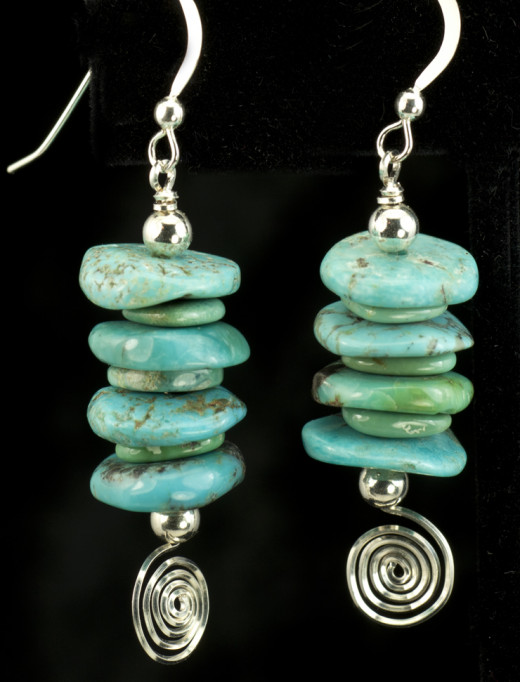
Still More Gemstones
- Rutilated Quartz is one of my all time favorites. Inclusion can be golden in color or black. The black version is known as tourmalated quartz.
- Sapphire - a corundum stone that can occur in a variety of colors. It is almost as hard as a diamond. Typically thought of as deep blue in color, sapphire occurs in a wide spectrum of colors and also in a color change variety (violet) which changes color depending on the viewing conditions.
- Sard - a silicate similar to carnelian but darker brown
- Smoky Quartz - smoky brown to almost black. Many people think that smoky quartz banishes negativity
- Sodalite - a relatively rare stone that ranges from deep blue to light blue and white. Fosters wisdom, logic, healing.
- Spinel - colors include black and a range of vibrant red tones, pinks, and even blues. Spinel's hardness makes it a popular stone for jewelry.
- Sunstone - a feldspar with a reddish to golden sheen; displays iridescence (similar to Labradorite). Sunstone is an interesting feldspar gemstone with a glittery appearance and usually an orange or reddish color, hence its name. The glitter effect is caused by inclusions of the mineral Hematite, or sometimes also Goethite or Pyrite. It can be translucent to opaque. It’s found in the US and Canada, in India, Madagascar, Russia, and also in Norway. Sunstone is best with flat surfaces or cut as a cabochon.
The optical effect appears to be due to reflections from inclusions of red copper, in the form of minute scales, which are hexagonal, rhombic, or irregular in shape. These inclusions give the stone an appearance something like that of aventurine, hence sunstone is known also as “aventurine-feldspar.” The optical effect called shiller and the color in Oregon Sunstone is due to copper. The middle part of this crystal sparkles, and usually the color is darkest in the middle and becomes lighter toward the outer edges. The feldspar which usually displays the aventurine appearance is oligoclase, though the effect is sometimes seen in orthoclase: hence two kinds of sunstone are distinguished as “oligoclase sunstone” and “orthoclase sunstone.” Sunstones are believed to have metaphysical properties for crystal healing and gem therapy. The sunstone is linked to good luck and good fortune.
- Tanzanite - (zoisite) Tanzanite's color depends on the orientation of the gem when cut, but it's usually deep blue and generally heat treated. Tanzanite is pleochroic (light traveling through the crystal in one direction is absorbed differently than light traveling in another direction, so there are color differences depending on how you view the stone).
- Tiger Eye - a chatoyant stone that occurs in several colors. (Chatoyancy refers to the bright bands of light across the stone and is a reflection effect) This "eye" effect is due to asbestos fiber inclusions. Tiger eye is reputed to increase peacefulness and clarity in the wearer.
- Topaz - Known since ancient times and available in many colors, the yellow to brownish color of this stone was extremely popular for jewelry in Medieval times. Blue topaz is currently the best known topaz color. Topaz was thought to foster success, love, and health as well as strengthening the mind.
- Tourmaline - available in an impressive array of colors, tourmaline can mimic a variety of other gems and its hardness makes it an ideal stone for jewelry. Some tourmaline contains two or three colors. The tourmaline family includes several separate minerals, one of which is elabite. Elabite accounts for most gem tourmaline.
- Turquoise - a mineral of arid regions. Turquoise varies from light sky blues to light grayish greens due to the presence of copper. The polished stone has a porcelain luster. Turquoise has been considered a gem since ancient times and adorned the rulers of ancient Egypt and also the Aztecs. The Ancient Anasazi of Chaco Canyon and the surround regions traded turquoise and fashioned turquoise ornaments. Turquoise is believed to provide protection and healing for the wearer.
- Zircon - (zirconium silicate) is generally colorless or blue. Brilliance is tremendous due to a high refractive index, but zircon also tends to be brittle and can chip or scratch readily. The ancients thought this stone could protect the wearer from disease. Cubic zirconia is zirconium oxide. Cubic zironia has a cubic crystal structure and possesses exceptional brilliance.

